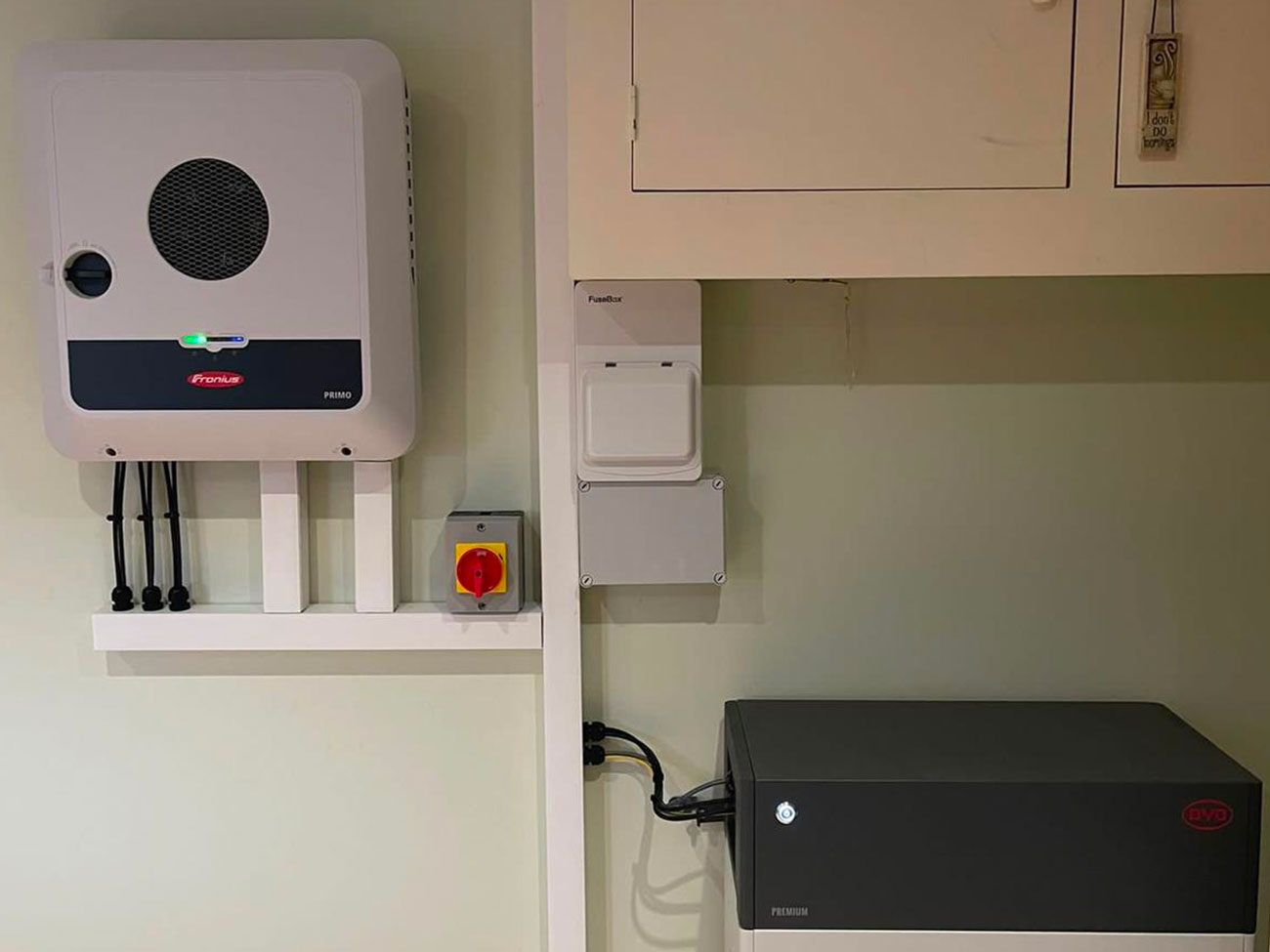DOMESTIC SOLAR PV BATTERY STORAGE SYSTEMS
Since the demise of the government subsidy known as the FIT’s scheme (Feed in tariffs) back in March 2019, lithium ion battery cells integrated as part of a new solar PV system quickly become the standard route for practically all new domestic solar installations.
Originally this was due to quite simply Solar PV systems requiring to capture and store a greater proportion of their daily electricity generation, which in turn offered greater savings and returns in order to offset the loss of the once generous FIT’s scheme subsidy.
Today we now see nearly all Solar PV systems in both domestic and commercial applications using battery storage as an integral part of the system, driven by spiralling energy costs – the emphasis of preserving your self-generated power has never been greater.
The advancement also of battery cell technology has developed at a frenetic pace during the course of just a few years, Its evolvement and development speed has been breath-taking driven mainly by the ‘electric vehicle revolution’ with global manufacturing powerhouses such as BMW, Mercedes, VW, Audi, JCB and even Rolls Royce now at the forefront of adopting this technology in their vehicles, and in Rolls Royce’s case both aeroplane and vehicles!
Basic operation of a battery storage system
Standard solar PV systems work effectively and can contribute a great proportion of a sites energy demands provided they are designed and sized correctly, however during peak generation periods (particularly through the summer months) standard PV systems will ‘over generate’ a term used when the generation of the Solar PV system is exceeding the electricity demand at your home.
This results in the inverters shifting the excess power back into to the grid network and is known as ‘exported power’ whilst this might sound like good news for those being paid by energy companies for exported energy, often the rewards are low compared to the price paid per Kwhr for imported energy. In fact this is akin to a poor stock market broker who ‘buys high and sells low’ this situation can be avoided by the deployment of a lithium ion battery storage acting as a reservoir for you to store your self-generated power.
Battery storage systems use current transformers (CT’s) fitted at the point of connection (close to your incoming supply meter point) in order to detect reverse exported power occurring – within milliseconds of its presence detected this power instead of feeding back into the National grid is captured and diverted into your battery bank for future distribution.
This sequence is repeated continually through the day to charge your batteries, or discharge when excess power is required to cover your sites consumption (the reverse of the above scenario) At night time or during days of unseasonable weather rain etc the reservoir of stored power in your batteries will discharge to compensate the temporary lack of generation from your Solar PV system. As soon as morning arrives and daylight begins your system will start to charge your battery bank again.
Contact us today where our friendly team can guide you through your requirements.
REFERENCE: Photovoltaic system | Solar Panels | Solar Power | Rooftop Solar Power | Solar Inverter | Solar Power in the UK
